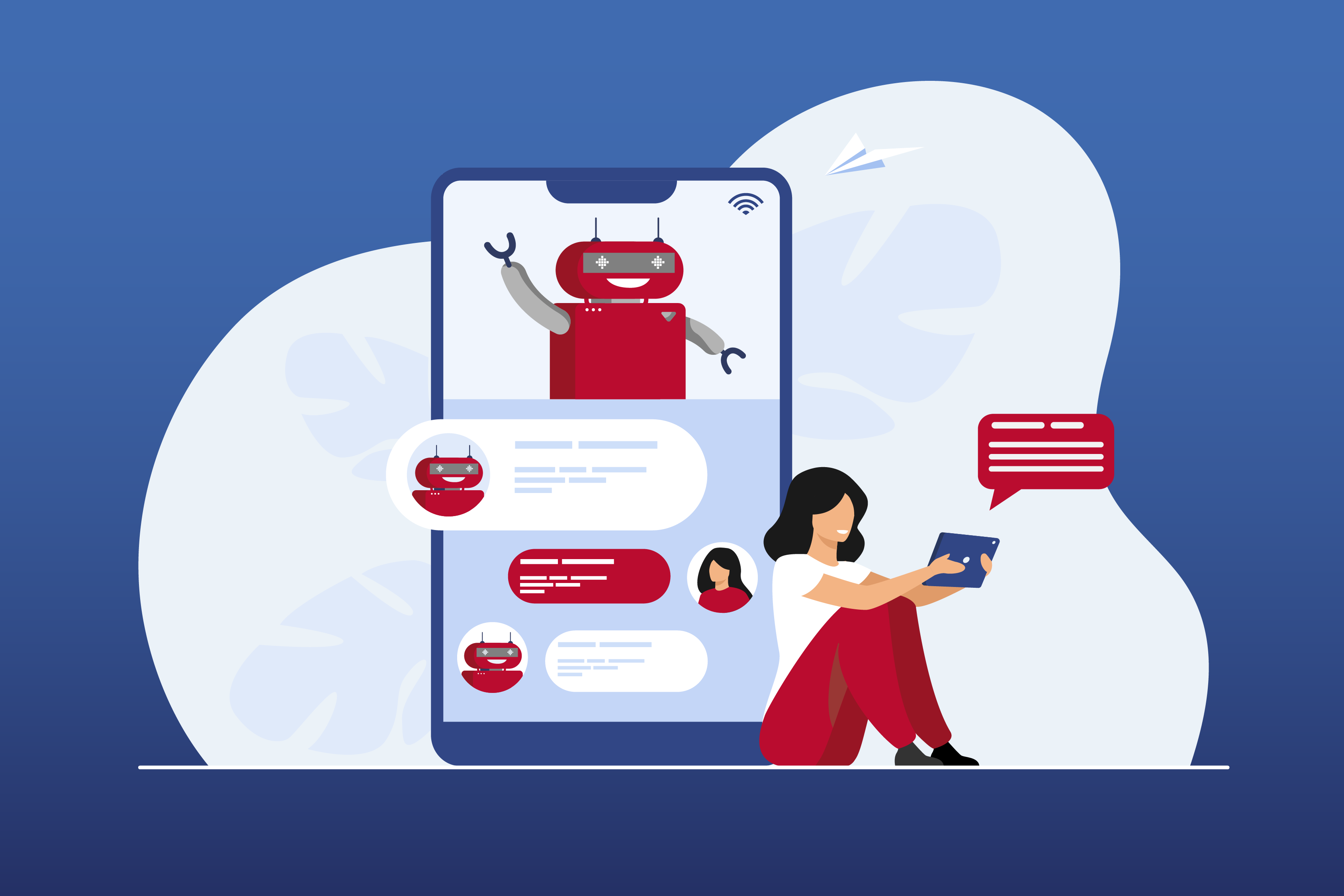As the instrument that will one day power flying cars, operate delicate surgeries, and even create new art trends, artificial intelligence or “AI” is often thought of as future technology. But if you own any type of electronic device—a phone, computer, tablet or even smartwatch—chances are you’re using AI every day, especially when it comes to bots.
What is a chatbot?
A conversational agent or “chatbot” is a computer algorithm that relies on natural language processing techniques to approximate human speech — (written, oral, both) — and interact with people. Siri, Google Assistant, Alexa and ChatGPT are well-known examples of conversational AI.
And these are just the chatbots with household names. Many retail websites often use chatbots as replacements for customer service agents. They are usually designed to answer frequently asked questions or gather customer data.
These types of chatbots were created to save time when dealing with straightforward, commonly asked questions. Simple responses didn’t go far beyond:
“Yes.”
“No.”
“How can I help you today?”
Today, these programs have evolved to engage in more complex conversations which allows for a wider range of use across industries. Instead of being directed by fabrics and sizes, a customer shopping for a new outfit might be drawn into a “friend-like” conversation to encourage engagement and sales.
AI: How are you feeling today?
You: I’m a little sad this morning. What do you think I should do?
AI: I’m sorry to hear that. Bright colors always make me feel better. Take a look at our new spring line for tops!
This leads to what’s known as the Eliza Effect, a human being’s tendency to assign human characteristics to software.
This anthropomorphizing of machines is one reason users find it difficult to distinguish between a human being and a computer. Is a person booking your Caribbean vacation, or did a chatbot anticipate your need for an early flight after tracking your search history?
While consumers work out the best ways to utilize chatbots for online shopping, social media users face a different set of AI-related concerns.
How is AI used on social media?
Carolina A. de Lima Salge, an assistant professor in the University of Georgia’s department of management information systems, started researching bots on social media over a decade ago when she stumbled on some “strange activity” online.
“I remember thinking, ‘This does not seem human.’ The patterns were a little too clear, and the activity was a little too high,” says Salge.
As she surveyed the responses on Twitter, Salge noticed that the number of posts and shares per user was too many to possibly come from a human being. The patterns were also too similar as numerous posts were made around the exact same topics.
Most of Salge’s research pertains to how bots curate and transmit information on social media. They’re programmed to post, amplify, and engage with posts whether the information is accurate or not. Salge says that bots that spread misinformation often dominate academic discourse but believes that people should think twice before labeling the bot as “good” or “bad.”
“It’s not that these bots have actual intent,” claims Salge. “That’s a human characteristic. Instead, their actions reflect the designer’s intentions.”
Some programmers have created social media accounts that are wholly operated by bots. X (formerly known as Twitter) even has a feature to help manage them using “automated accounts.” Users can create bots that notify people of earthquakes, correct grammar or write short stories. These automated social media accounts are becoming even more human-like.
The Uncanny Valley
One of the Instagram accounts that has fascinated Salge and 2.6 million followers is Lil Miquela, whose profile describes her as a “19-year-old robot living in LA”. At first glance, this might seem like a joke, but a closer look at the photos proves that Miquela is exactly what she says she is: a robot.
More precisely, she’s an AI-generated social media personality whose features have been compared to the uncanny valley phenomenon, the unsettling feeling a human develops when encountering a non-human entity that appears human-like.
Miquela is not a traditional “bot” — her activity is not necessarily automated — but she is straddling a new frontier of what it means to be a human versus a machine. Her followers respond to her posts as though they are talking to a real person, but there’s no telling who’s talking back.
“It’s actually very difficult to effectively detect bots,” says Salge. “The techniques we use can get pretty sophisticated, but they are by no means perfect. Whether you’re creating a bot or searching for one, don’t trust an algorithm blindly. It will make mistakes, just like humans do.”
It’s not an understatement to say that AI is everywhere, especially online. As bots are further incorporated into our everyday lives, from the stores we shop at to the stories we read, experts like Salge are encouraging users to pay attention to who or what you’re talking to. Because a bot cannot have a will of its own, our experience depends on how we use them, train them and adapt to them.


